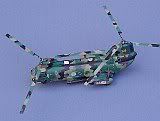January
2011
|
Vertol
107 HKP-4 |
|
![]()
![]() Selected
WW2 70th Anniversaries this month:
Selected
WW2 70th Anniversaries this month:
6 Jan - Operation Compass - North Africa. General Wavell's Western Desert Force continues its advance into Libya, capturing Tobruk on the 22nd January and taking a further 17,000 Italian prisoners.
11 January 1941 - HMS ILLUSTRIOUS suffers a crippling dive-bomber attack from German and Italian aircraft and must enter dry-dock in Malta for repairs.
January 23 – Legendary aviator Charles Lindbergh testifies before the U.S. Congress and recommends that the United States negotiate a neutrality pact with Adolf Hitler.
Vertol 107 HKP-4, Royal Swedish Navy.
Airfix, 1/72.
The Boeing Vertol 107 design was selected by the US Marines in early 1961 as the CH-46 Sea Knight assault helicopter and is expected to remain in service until 2014, when the last squadrons will have converted to the MV-22 Tilt Rotor aircraft.
In Swedish service, the aircraft is known as the HKP-4; as well as its normal assault and cargo role with the Swedish Air Force, Swedish Navy Vertols are used as Anti-Submarine helicopters, fitted with a radar dome on the rear ramp and capable of carrying depth-charges and homing torpedoes. 107 variants were also built under licence by Kawasaki in Japan.
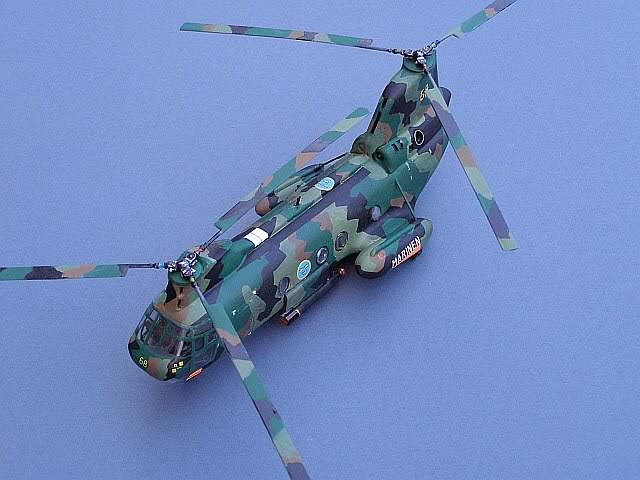
I actually bought this kit, fully intending to do it as a USN CH-46 Sea Knight, but the large fuel sponsons and Swedish splinter camouflage scheme just dragged me in; I'm not sure that anyone else does a Swedish variant as a kit in this scale!
The Airfix kit first appeared in a far less exciting all over green Swedish scheme with orange trim and has reappeared several times over the years in boring grey US Navy guise, including a period as a "snap together" kit. Its a pretty simple kit to build, with little in the way of detail, huge rivets and minimal framing on the canopy. It fits together reasonably well, but it is certainly not one to write home about.
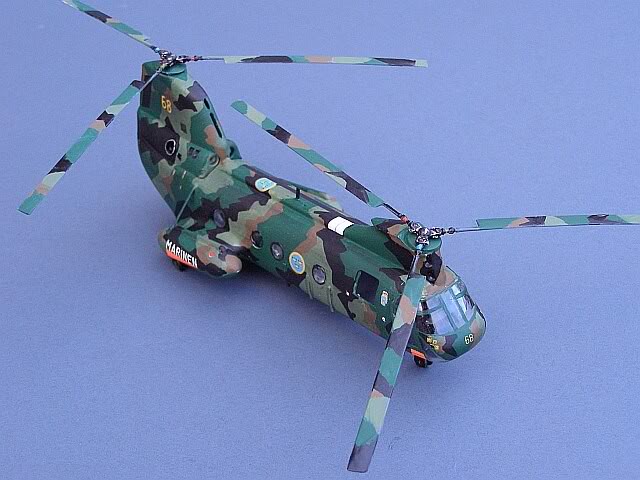
To update it in line with the provided decals, I added some steadying braces for the rear fuel sponsons, plus a scratch built torpedo pylon on the port side, radar dome on the ramp and pylon attachment plates on the starboard side. The nose wheel is very fragile and broke off shortly after it was attached, so a steel pin has been added to give it more strength. I haven't yet added the A-frame winch for the stbd crew door.
Definitely a fun build rather than a serious one, but apart from the fussy colour scheme, a satisfying way of spending a few spare hours on a grey winter's afternoon!
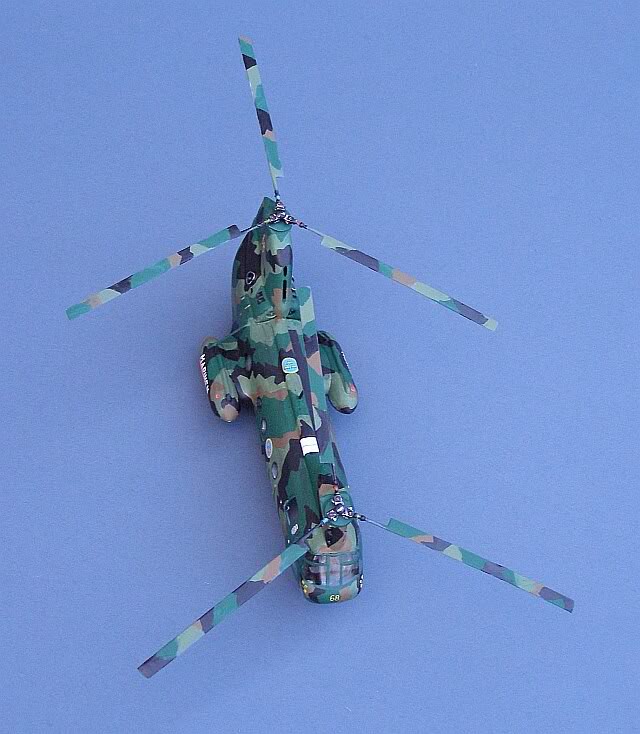

More Swedish aircraft on the Friends & Allies pages
Infantry Tank Mk.III Valentine, 2nd Lothians & Borders Horse Yeomanry, 1941
Italeri/ESCI 1/72
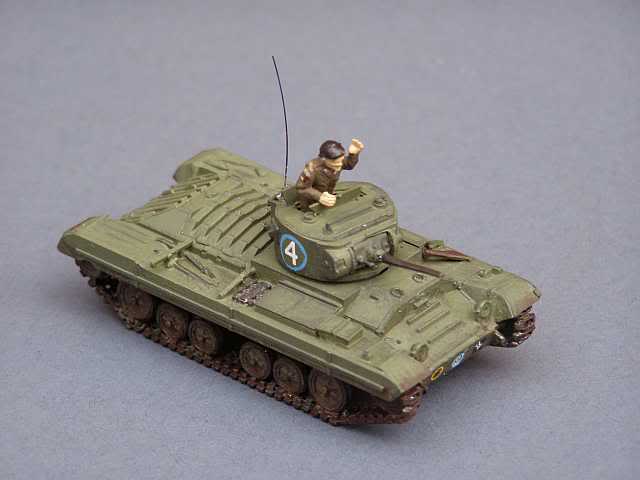
The Vickers Infantry Tank MkIII Valentine entered service in June 1940 and became the most widely produced British tank of WW2. Nearly 8,000 were built in the UK and Canada, seeing service until the end of the war. As a replacement for the Matilda, it was less heavily armoured but more reliable and it remained in production until 1944.
Like most British tanks, it was slower and more lightly armed than its German adversaries, but Valentines fought well in the North African Campaigns and saw extensive service with the Red Army during the battle for Moscow. As they began to lose their combat edge against the Germans, Valentines were also converted into a variety of specialist tanks, including flame throwers, bridge layers, flail tanks, anti-aircraft tanks and specialist tank destroyers.
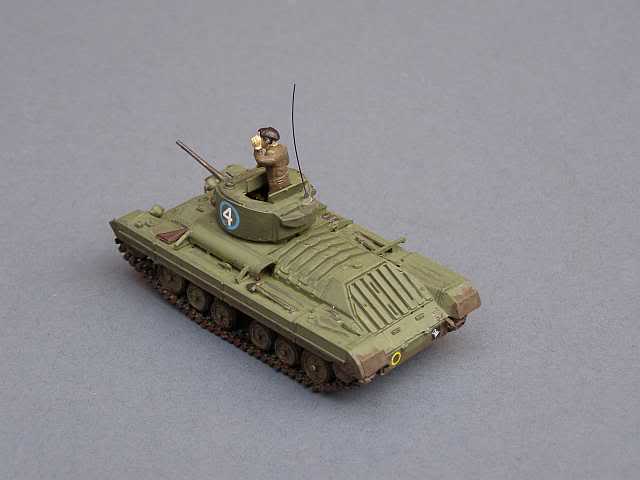
Following the loss of the entire 1st Lothians Regiment at St Valery-en-Caux, the 2nd Lothians and Borders Horse Yeomantry became the Lothian's first line |regiment. Serving initially with a motor machine gun division on anti-invasion duties, when the British Army made good its earlier losses in France they soon returned to the familiar armoured cavalry role, re-equipping with Valentine tanks in which they would see their first combat action during the 1942 invasion of Vichy French North Africa and Axis-held Tunisia, Operation Torch.
This is another ex-ESCI kit re-released by Italeri. As tank kits go, it is quite comprehensive, although my copy had a few moulding issues on the smaller parts - either the mould designer gave up on some bits, or the mould is getting rather worn. As supplied, Italeri give you decals for 2 North African based tanks, one Soviet Lend-lease and one from the 6th Armoured Division, 26th Armoured Brigade, training in the UK in 1941 as the British Army rebuilt itself after the disaster in France. The last of these is the one that interested me, as the 26th Armoured Brigade included the 2nd Lothians and Borders Horse Yeomanry Regiment.

Decals have been modded slightly; Italeri supply those for a tank of one of the senior regiments (16th/5th Lancers I think) within the 26th; I therefore sourced some blue circles (for the 3rd senior Regiment). In common with most British tank units, the Lothians named their tanks in line with the Squadrons (A Sqn = A names etc). The Lothian's tanks were all named after Scottish castles, and since I grew up in the village of Currie near Edinburgh, I have chosen to depict the C Sqn tank named "Currie". The tank commander wears the black bunnet (beret) with silver wheatsheaf of the Lothians & Borders, plus Khaki battledress with Royal Armoured Corps shoulder titles and flashes.
Links
to related pages on this Website: ![]()
www.gengriz.co.uk
